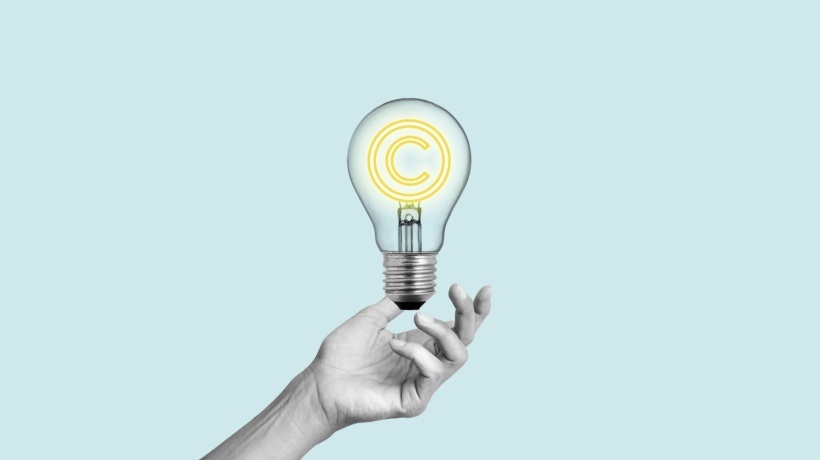Things You Should Know About Copyright Protection In eLearning
Your eLearning content, when properly copyrighted, enjoys protection under the Copyright Law of the United States. The Copyright Act of 1976, as subsequently amended since then, offers lawful owners the rights to safeguard their creations and, where legally permitted, enjoy the benefits of those creations:
- When you design and create unique eLearning content for a course that you are working on, you should protect your ownership rights to that content by using copyright laws to grant you such protection.
- Copyright protection in eLearning allows you to solely own such content, and gives you the exclusive right to decide on distribution, sharing or 3rd-party use of the content.
- Be aware though, that not everything you produce for an eLearning course might be your copyrighted materials. If there is an express understanding that someone else (for instance, your employer or the institution you are developing the content for) will own the content, then you may not have any rights to what you have designed and created.
- If you are developing a course on your own (i.e. not on behalf of someone else who will legally own your creations), then you should consider using the copyright symbol -©- on all of your original works during the development phase of your eLearning content.
- When using the copyright symbol ©, it is not necessary for you to formally file for copyright protection. However, having a formal copyright assignment makes it easier to defend your title/ownership if material breaches of your copyrights do occur.
- Once copyrighted, your eLearning material receives special protections that make you its exclusive owner, allowing you ultimate control on its distribution, use and dissemination.
- When copyrighted, your content can also provide you special economic opportunities as a result of which you can monetize (earn money from) your works
One very important thing to keep in mind about copyrighted content is that the law does not protect the fundamental ideas that your content deals with – just the original (and unique) expression of those ideas by you.
A very pertinent aspect of copyright protection in eLearning content is enshrined in the Digital Millennium Copyright Act (DMCA) of 1998, which took the original copyrights laws and brought them into the digital age. DMCA is most relevant to you, as e-content designers and creators, because it offers you additional protection and remedies to safeguard your digital content from unintended or malicious use.
Can You Use Other People’s e-Content?
When designing your own eLearning courses, you may sometimes have the need to use content created by your peers, or content you download from the internet (public domain). The question is: Can you do that without running afoul of the Copyright Act?
The answer is: Yes – with certain limitations.
Most copyrighted content grants original creators “exclusive right” for only a limited duration (typically 50 to 100 years). Once exclusive right-unencumbered content enters the public domain, it may still be the originators creation, but is limited by the “Fair use” guidelines.
Under fair use, original content can still be copied (in full or part) and used by others without the creators permission. However, the use of such content must be done in a way that’s not unduly “unfair” to the original creator.
Useful Tools And Tips To Consider
The Title 17 of the Copyrights act comprises of 13 chapters, each of which has multiple sections and sub-sections. While eLearning content designers are highly encouraged to go through the entire document (at their leisure!), you may be able to use the following tips, tricks and tools to start getting the most out of copyright protection instantly:
- If you are using MS Word to develop your content, here are some guidelines on how you can add the copyright symbol -©- to your content.
- When using Google Docs to produce your e-content, you can insert the copyright symbol by following these guidelines.
- Follow these guidelines to ensure that you are using the copyright symbol correctly.
- If you are in need of content created by others, which you can use without infringing on other people’s copyright, then you should start your search at the Creative Commons (CC) archive. While this resource may offer content that you can use under the “Fair Use” guidelines, you must always check with the creator about appropriate use.
- When you do locate content that you believe can be used under “Fair Use”, make sure you use this proprietary Fair Use Evaluator to ascertain whether your intended use is indeed “fair’. The tool also produces a useful report that you can maintain as proof of your endeavors to ascertain fairness of use – should such an eventuality occur.
- If you come across unlawful use of your digital copyrighted content on the Internet, you can file a Legal Removal Request at Google (other search engines and website owners are legally obligated to offer similar services) and seek for such content to be excluded from its search engine.
- If you are alleged to have infringed upon someone else’s copyrights, then most e-content hosts offer you the opportunity to file a counter claim under sections 512(g)(2) and (3) of the US Copyright Act
Copyright laws, like any other branch of legality, are rife with challenges with regards to interpretation, nuances and definitions. As a result, if possible, when facing a copyrights issue you should always consult with a copyrights lawyer before making any decisions related to your rights.
If you want to learn about creating successful training courses, obtain a copy of the Instructional Design For eLearning: Essential Guide To Creating Successful eLearning Courses book where you will find instructional design and eLearning tips, tricks, suggestions, and best practices. This book is also available in Spanish. In addition, you may be interested in the Instructional Design For eLearning course, which also focuses on creating successful, results-oriented training materials.








